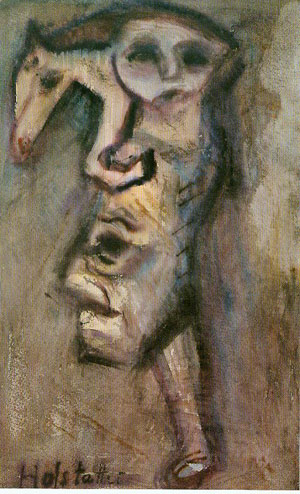Osias Hofstatter | From the museum's collection
Text: Yoav Dagon
Osias Hofstatter was born in 1905, Poland. Died in 1995, Israel.
When Osias Hofstatter arrived in Israel in 1957 and laid down his wandering stick, dams opened releasing a powerful stream of creativity which seeped into the artistic consciousness of the country. Researchers and art critics as well as museum curators define his work as being close to expressionism and the atmosphere as being directly influenced by his personal history.
“Hofstatter’s art expresses qualities of anxiety, worry, nightmare and panic. There is a tension between the anxiety aroused by the Holocaust and the anxiety due to religious existentialism”.
The stigma of a painter of the Holocaust, and his preference for using black ink as a symbolic choice channel the universal work of Hofstatter into a narrow and limited path. A closer look at the paintings which mirror the world of the artist but also express the spirit of the era, make it necessary to free oneself from existing conventions and even to understand the message behind his words: “Perhaps you’ll understand that a ‘hasid’ who looks like a ‘hasid’ is not a ‘hasid’.”
Hofstatter places the human being in the center of his universe. Over his complex morphology, which is of secondary importance to the artist, are planted, as an artistic act, innumerable essence of two major kinds: one the pure painting which serves as a means for placing the figue within the given frame (mostly paper), the other, to express the sum total of sometimes contradicting truths of which this essence is composed.
